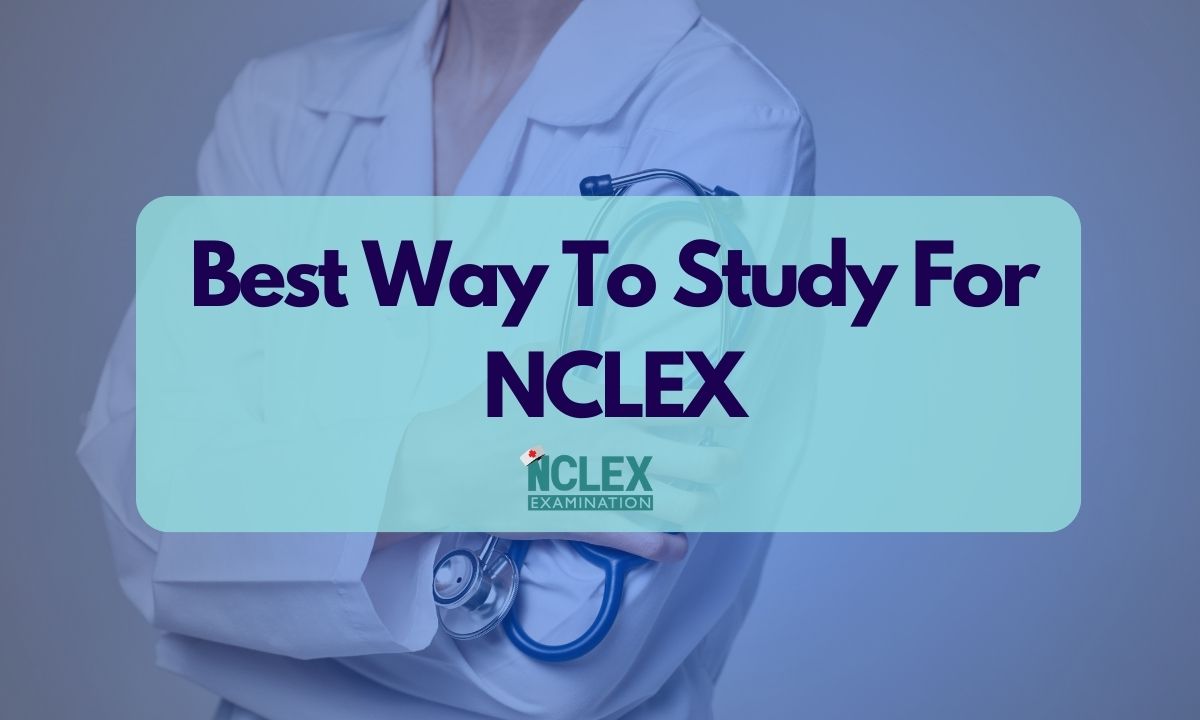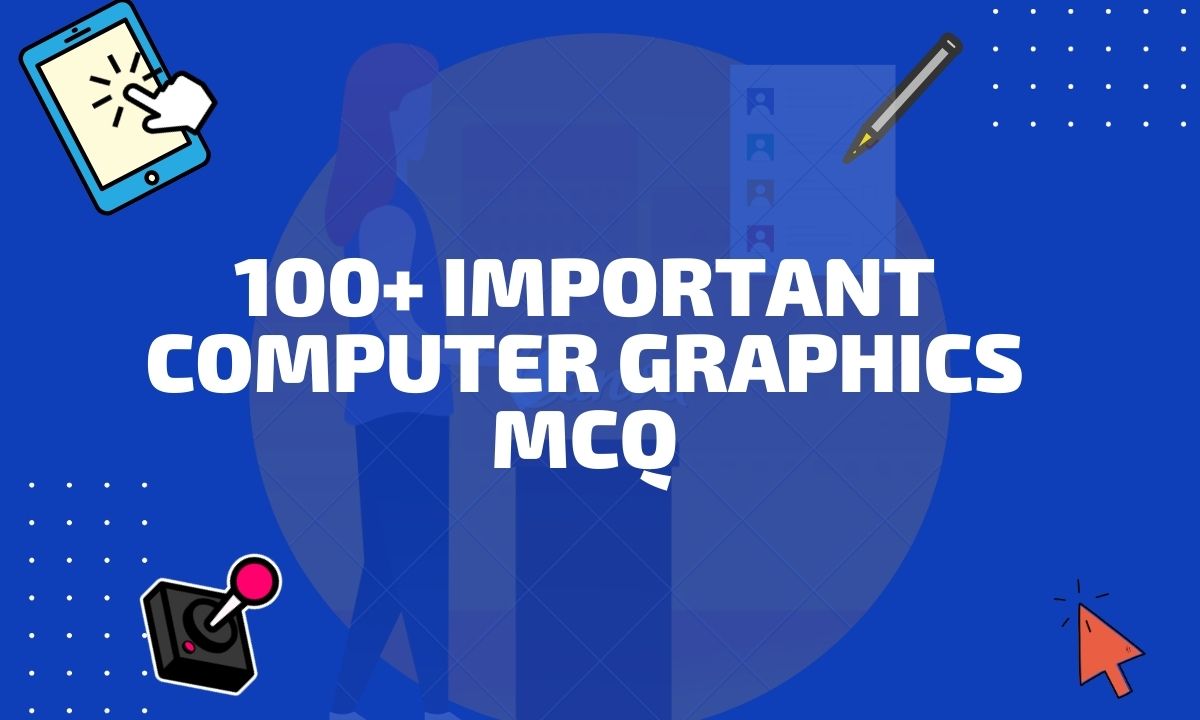Looking for BCA fifth semester syllabus TU, you are at your destination. Tribhuvan University ( TU ) on BCA Fifth Semester Syllabus focuses more on courses related to networking, management, graphics, and DotNet Technology. After getting well knowledge of client-side script and server site script using JavaScript and PHP now students have to learn ASP .NET Technology. Students will have to practice practically all subjects in the fifth semester.
The subject you have to read in the fifth semester
Tribhuvan University has a total of 5 subjects all of 100 marks ( 60 Theoretically + 40 Practically )
- MIS and E-Business [ CACS301 ]
- DotNet Technology [ CACS302 ]
- Computer Networking [ CACS303 ]
- Computer Graphics and Animation [ CACS305 ]
- Introduction to Management [ CAMG 304 ]

Read More
Pokhara University Fifth Semester Syllabus
Fourth Semester Syllabus Tribhuvan University
Fourth Semester Syllabus Pokhara University
Kathmandu University Fifth Semester Syllabus
MIS and E-Business [ CACS301 ]
Course Title: MIS and E-Business
Course Code: CACS301Year/Semester: III/V
Class Load: 5Hrs. /Week (Theory: 3Hrs, Practical 2Hrs.)
Course Description
This course provides the fundamental knowledge of Management Information systems and E Business and its associated infrastructure, security and protection issues, payment system, and ultimately live implementation of any web application in the Web server.
Objectives: The general objectives of this course are to know the fundamental knowledge of MIS/E-Business and implement the web application on a Web Server.
Unit 1: Introduction to E-Commerce: Definitions and Concepts; Defining E-Business; Pure Versus Partial EC; EC Framework, Classification of EC; Benefits of E-Commerce; Electronic Markets; Role of Internet and Web in E-Commerce; The Limitations and Barriers of EC; Social Networks and Social Network Services; M-Commerce: Concept, Scope, Attributes, Benefits; Location-based I-commerce, I-Commerce Infrastructure, Location-Based Services, and Applications. 7LH
Unit 2: The Network Infrastructure for E-Commerce: Introduction to Information Superhighway (I-Way), Components of the I-Way, Internet as network infrastructure. Wireless Application Protocol: Wireless Application Protocol (WAP); Architecture of WAP; Working of WAP; Wireless Technologies: ADSL , WiMAX, WLAN, WMAN Wi-Fi. UMTS (JG), l TE (4G), (5G NR). Security Issues related to Wireless Communications. 8LH
Unit 3: Introduction to Management Information System: Data, information, computer-based information system (CBIS), Information System Resources, Management information system, Transaction processing (TPS) system, decision support system (DSS), and executive information system (EIS), SCM, CRMS, and international Systems: Introduction, Supply Chain Management Systems, Customer Relationships Management Systems. enterprise systems and Challenges of Enterprise Systems Implementations- Managing the implementation, International Information Systems-Outsourcing and off-shoring. 8LH
Unit 4: E-Commerce Security and Fraud Issues and Protections: Basic EC Security Terminology, The Threats, Attacks, and Attackers, EC Security Requirements: Confidentiality, Integrity and Availability, Authentication, Authorization and Nonrepudiation; Technical Malware Attack: Viruses, Worms and Trojan Horses, Heartbleed, Distributed Denial of Service, Cryptoblocker, Page hijackings, Botnets, Malvertising, ransomware, sniffing, non-Technical Malware attack: Social Phishing, Pharming, Identity Theft and Identify fraud, EC defense Strategy: access control(Authorization and Authentication, Biometric Systems), encryption and PKI (Symmetric Key Encryption, Asymmetric Key Encryption, Certificate Authority(CA) , Secure Socket Layer (SSL). Securing e-commerce networks: Firewalls, Virtual Private Networks, Intrusion Detection Systems (IDS), intrusion prevention system (IPS). 10LH
Unit 5: E-payment systems: Online payment cards (credit cards, charge cards, debit cards, smart cards), processing cards online, credit card payment procedure, e-micropayments, e-checking, and its processing in online. Automated clearing house (ACH) network, mobile payments (Digital wallet), mobile payment participants and issues, international payments, emerging EC payment systems and issues: cryptocurrency, virtual currency. A case study of emerging trends in the online payment system in Nepal. 6 LH
Unit 6: Launching a Successful EC Website: Planning Online Businesses (Business Plan, The cost-benefit, risk elements of a business case, funding a New Online Business, EC Model selection), The process of building a website, basic hierarchical website structure, website hosting and obtaining a domain name (cPanel management, upload EC site to the web server), web content creation and management: (Web content, Categories and Types of Content, Content Management and Maintenance, Catalog Content and its Management), Website design criteria, Site Map and Navigation. Web page layout grid, Colors and Graphics, Website Usability, Performance, Website Promotion, implementation of Payment system, Website Promotion, and Search Engine Optimization (SEO). 10 LH
Laboratory Works: 32LH
Laboratory works should be done covering all the topics listed above and a project work should be carried out by individually implementing a fully functioning e-commerce web application along with payment system.
DotNet Technology [ CACS302 ]
Course Title: DotNet Technology (3 Cr.) Course Code: CACS302
Year/Semester: 3rd/Fifth
Class Load: 6 Hrs./ Week (Theory: 3 Hrs, Practical: 3 Hrs.)
Course Description:
This course covers different concepts of .NET framework. It also covers basic to advanced features of C# language including language basics, creating types and inheritance, delegates, events, lambda expressions, LINQ, working with databases, and developing web applications using ASP.NET.
Course Objectives:
The primary objective of this course is to provide concepts of .NET framework and different concepts of C# programming language and make students familiar with their uses and applications.
Course Contents:
Unit 1: Introducing C# and the .NET Framework (7 Hrs.)
Object Orientation; Type Safety; Memory Management; Platform Support; C# and CLR; CLR and .NET Framework; Other Frameworks; Framework Overview; .NET Standard 2.0; Applied Technologies
Unit 2: The C# Language Basics (12 Hrs.)
Writing Console and GUI Applications; Identifiers and Keywords; Writing Comments; Data Types; Expressions and Operators; Strings and Characters; Arrays; Variables and Parameters; Statements (Declaration, Expression, Selection, Iteration, and Jump Statements); Namespaces
Unit 3: Creating Types in C# (12 Hrs.)
Classes; Constructors and Deconstructions; this Reference; Properties; Indexers; Static Constructors and Classes; Finalizers; Dynamic Binding; Operator Overloading; Inheritance ; Abstract Classes and Methods; base Keyword; Overloading; Object Type; Structs; Access Modifiers; Interfaces; Enums; Generics
Unit 4: Advanced C# (14 Hrs.)
Delegates; Events; Lambda Expressions; Exception Handling; Introduction of LINQ; Working ·with Databases; Writing Web Applications using ASP.NET
Laboratory Work: The laboratory work includes writing console and/or GUI programs in C#
• To implement basic language features
• To create classes and objects and to implement different object-oriented features
• To implement inheritance
• To implement advanced features like delegates, event handling, lambda expressions, exception handling
• To implement LINQ and database applications
Teaching Methods:
The teaching faculties are expected to create environment where students can update and upgrade themselves with the current scenario of computing and information techno logy with the help of topics listed in the syllabus. The general teaching pedagogy that can be followed by teaching faculties for this course includes class lectures, laboratory activity, group discussions, case studies, guest lectures, research work, project work, assignments (Theoretical and Practical), and written and verbal examinations.
Evaluation:

Note: Assignment may be subject specific case study, seminar paper preparation, report writing, project work, research work, presentation, problem solving, etc.
Final Examination Questions Format [FM = 60, Time= 3 Hrs]
| SN | Question Type | Number of Questions | Marks per Question | Total Marks |
| 1 | Group – ‘A’ Objective Type Questions (Multiple Choice Questions) Attempt all the questions. | 10 | I | 1O x 1= 1O |
| 2 | Group- ‘B’ Short Questions (Attempt any SIX questions.) | 7 | 5 | 6 X 5 = 30 |
| 3 | Group- ‘C’ Long Questions (Attempt any two questions.) | 2 | 10 | 2 X 10 = 20 |
Computer Networking [ CACS303 ]
Course Title: Computer Networking (3 Cr.)
Course Code: CACS303
Year/Semester: III/Fifth
Load: 5 Hrs./ Week (Theory: 31-Hrs, Practical: 2 Hrs.)
Course Description
This course offers detailed concept and structure of networking standards and principles. It includes introduction, functioning and significance of Physical Layer, Data Link Layer, Network Layer, Transport Layer, Application layer and some security mechanisms. It does not entirely focus on theoretical concept but also strongly focuses on practical skill based learning.
Course objectives
The general objectives of this course are to provide theoretical as well as practical knowledge of computer networking to make students capable of implementing, managing and troubleshooting the issues of computer network in their personal as well professional life.
Course Contents
Unit 1: Introduction
- Network as an infrastructure for data communication
- Applications of Computer network
- Network Architecture
- Types of computer Networks
- Protocols and Standards
- The OSI Reference Model
- The TCP/IP Protocol Suite
- Comparison between OSI and TCP/IP Reference model
- Critiques of OSI and TCP/IP Reference model
Unit 2: The Physical Layer
- Functions of Physical Layer
- Data and Signals: Analog and Digital signals, Transmission Impairment, Data Rate Limits, Performance
- Data Transmission Media: Guided Media, Unguided Media and Satellites
- Bandwidth Utilization: Multiplexing and Spreading
- Switching: Circuit switching, Message switching & Packet switching
- Telephone, Mobile and Cable network for data Communication
Unit 3: The Data Link Layer
- Functions of Data Link Layer
Data Link Control: Framing, Flow and Error Control - Error Detection and Correction
- High-Level Data Link Control(HDLC) & Point – to – Point protocol(PPP)
- Channel Allocation / Problem
- Multiple Access: Radom Access(ALOHA, CSMA, CSMA/CD, CSMAICA), Controlled Access(Reservation, Polling , Token Passing), Channelization(FDMA, TDMA, CDMA)
- Wired LAN: Ethernet Standards and FDDI
- Wireless LAN: IEEE 802.11x and Bluetooth Standards
- Token Bus, Token Ring and Virtual LAN
Unit 4: The Network Layer
- Functions of Network Layer
- Virtual circuits and Datagram Subnets
- IPv4 Addresses: Address Space, Notations, Classfu l addressing, Classless addressing, Subnetting and Network Address Translation(NAT)
- 1Pv4 Datagram format and fragmentation
- 1Pv6 Address Structure and advantages over 1Pv4
- Routing Algorithms: Distance Vector Routing, Link State Routing
- Internet Control Protocols: ARP, RARP, ICMP
- Routing protocols: OSPF, BGP, Unicas t, Multicast and Broadcast
Unit 5: The Transport Layer
- Functions of Transport Layer
- Elements of Transpot1 Protocols: Addressing, Establishing and Releasing Connection, Flow Control & Buffering, Error Control, Multiplexing & Demultiplexing, Crash Recovery
- User Datagram Protocol(UDP): User Datagram, UDP Operations, Uses of UDP, RPC
- Principles of Reliable Data Transfer: Building a Reliable Data, Transfer Protocol, Pipelined Reliable Data Transfer Protocol, Go Back-N(GBN), Selective Repeat(SR)
- Transmission Control Protocol(TCP):TCP Services, TCP Features, TCP Segment Header
- Principle of Congestion Control
Unit 6: The Application Layer
- Functions of Application layer
- Application Layer Protocols: DNS, DHCP, WWW, HTTP, HTTPs, TELNET, FTP, SMTP, POP, IMAP
- Concept of traffic analyzer: MRTG, PRTG, SNMP, Packet tracer, Wireshark.
Unit 7: Network Security
- Model for Network Security
- Principles of cryptography: Symmetric Key and Public Key
- Public Key Algorithm – RSA
- Digital Signature Algorithm
- Communication Security: IPSec,
- VPN, Firewalls, Wireless Security.
Practical Tasks
- Prepare hardware and software specification for basic computer system.
- Determine the appropriate placement of networking devices on a network .
- Identify networking cable standards. Create and test cross – over and straight cab les.
- Configure the IP address of the computer.
- Create a basic network and share file and folders.
- Install and configure window s server: Active Directory, Use r and Group Policy Management.
- Set the file access permissions and quota in windows server.
- Configure basic DNS and DHCP services in windows server.
- Install Linux based OS and practice on basic Linux and networking commands.
- Configure IP address and subnet in Linux Machine.
- Install packet tracer and identify the features of packet tracer.
- Implement the LAN topologies.
- Demonstrate the use of YLAN.
- Implement the both static and dynamic router configurations.
- Install and configure DNS, DHCP, FTP and We b Servers in Linux machine .
- Capture some packets and analyze the header using Wires hark.
- Implement the firewall.
Teaching Methods
The teaching faculties are exp ected to create environment where students can update and upgrade themselves with the current scenario of computing and information technology with the help of topics listed in the syllabus. The general teaching pedagogy that can be followed by teaching faculties for this co urse includesclass lec tu res, la boratoryactivity, group discussions, case studies, guest lectures, researc h work, project work, assignments (Theoretical and Practical), and written and verbal examinations.
Evaluation
| Examination Scheme | ||||||
| Internal Assessment | External Assessment | Total | ||||
| Theory | I | Practical | Theory | I | Practical | |
| 20 | I | 20 (3 Hrs.) | 60 (3 Hrs.) | I | – |
Computer Graphics and Animation [ CACS305 ]
Course Title: Computer Graphics and Animation (3 Cr.)
Course Code: CACS305
Year/Semester: 111/V
Class Load: 6 Hrs./ Week (Theory: 3Hrs. Tutorial: 1 Hrs., Practical: 2 Hrs.)
Read Now: Applications of Computer Graphics
Course Description
This course is designed to extend students’ knowledge and practice in Graphics hardware, software, and applications. It also provides the knowledge of data structures for graphics, graphics languages, and models for 2D and JD objects, clipping, hidden surface elimination, depth buffer, raster graphics, shading, and rendering.
Course objectives
Upon completion of this course, students should be able to I. Explain the basic principles of computer graphics. 2. Develop 2D and JD computer graphics applications. 3. Specify lighting and object materials in computer graphics programming.
Course Contents
Unit 1: Introduction 6LH
1.1 Advantage of Computer Graphics and Areas of Applications
1.2 Hardware and Software for Computer Graphics. (Hard Copy, Display Technologies),
1.3 Random Scan Display System, Video Controller, Random Scan Display Processo
1.4 Raster Graphics
1.5 Scan Conversion Algorithms (Line, Circle, Ellipse)
1.6 Area Filling (Rectangle, Ellipse), Clipping ( Lines, Circle, Ellipse), Clipping Polygons
Unit 2: Two dimensional and three dimensional transformations 7LH
2.1 2- Dimensional transformation
2.2 2-D Translation, Rotation, Scaling,
2.3 Homogeneous Coordinates, Reflection , Shear transform
2.4 3-Dimensional transformation,
2.5 3-D Translation, Rotation Scaling, Reflection, Shear.
3 Unit 3: Clipping 7LH
3.1 1 Window to view port transformation
3.2 Clipping, line clipping,
3.3 Cohen -Sutherland line clipping
3.4 Polygon clipping
3.5 Sutherland and Gary Hodgman polygon clipping algorithm
Unit 4: Visible Surface Determination and computer graphics algorithm LH15
4.1 Image space and object space techniques
4.2 Hidden Surface removal- Depth comparison
4.3 Z-Buffer Algorithm
4.4 Back-Face Removal
4.5 The Painter’ s -Algorithm
4.6 Scan-Line Algorithm
4.7 Light and Color and different color models (RGB,CMY, YIQ)
Unit 5: Animation and virtual reality LH10
5.1 Basic Principles of Animation and Types of Animation
5.2 Introduction to the flash interface
5.3 Setting stage dimensions, working wit h panels, panel layouts
5.4 Layers & Views
5.5 Shaping Objects – Overview of shapes, Drawing & Modifying Shape s
5.6 Bitmap Images & Sounds
5.7 Animation -Principles , Frame by frame animation, tweening, masks
5.8 Intro duction to virtual reality
Laboratory Work
Laboratory work should be done covering all the topics listed above and a small project work should be carried out using the concept learnt in this course using Open GL.
Introduction to Management [ CAMG 304 ]
Course Title: Introduction to Management (3 Cr)
Course code: CAMG 304
Year/Semester: III N
Class load: 3 Hrs./Week (Theory: 3Hrs)
Course Objectives
This course aims to impact the basic management knowledge, and skills to the students so as to enhance their managerial capabilities and enable them to apply in the practical field.
Course Description
This course contains Introduction to Management, perspectives in management thought, emerging issues and challenges in management, management functions like planning, leading , controlling, organizational change and development, communication, emerging issues in quality management, technology and management.
Course Contents
Unit 1: Introduction LH4
Management: concepts, meaning and functions. Types of managers. Managerial roles and skills. Organization and management. Changing perspectives of organization.
Unit 2: Perspectives in Management LH 7
Classical Perspective: scientific management, administrative management and bureaucracy. Behavioral Perspective: Hawthorne studies, human relations movement, and emergence of organizational behavior. Quantitative Perspective: management science and operations management. Integrating perspectives: systems and contingency perspectives. Emerging management issues and challenges
Unit 3: Planning and decision making LH 7
Concept of planning, Levels of Planning: Strategic, Tactical and operational. Steps m Planning. Tools for planning. Decision Making: meaning, types and process. Decision making conditions – certainty, risk and uncertainty.
Unit 4: Organizing LH9
Concept of organizing, process and principles of organizing. Organization Architecture:
vertical differentiation – tall versus flat hierarchies, horizontal differentiation – functional structure, multidivisional structure, geographic structure, and matrix structure. Authority:
line authority a.9.dstaff authority. Delegation of authority. Centralization, Decentralization and Devolution: meaning, reasons, advantages and disadvantages. Staffing: concept and importance.
Unit 5: Leading and communication LH 7
Concept and qualities of leadership. Transformational and transactional leadership, Leadership Styles: autocratic, democratic, and participative. Concept of managerial ethics. Motivation: concept, importance, and techniques. Communication: meaning, process, and networks. Types of communication, Barriers to effective communication.
Unit 6: Controlling and total quality management LH 5
Concept, purpose, Process and types of controls. Essentials of effective control systems. Control tools and techniques. Quality: Concept and importance. Total Quality Management: concept, components, principles, tools and techniques. Emerging issues in quality management.
Unit 7: Organizational Change and Development LH 5
Concept and nature, forces, paradigm shifts and areas (structure, technology, business process and behaviors) of organizational change. Resistance to change. Overcoming resistance to change. Concept of Organizational Development
Unit 8: Technology, Organization and Management LH4
Concept of technology, approaches to technology and organization, social networking, use of technology in people management,
Evaluation:
Internal Assessment: 40 marks External Assessment: 60 marks Total : 100 marks.
Teaching methods:
The major teaching methods include the case analysis, project work, term paper, assignments, and quiz. The instructor decides the learning strategies based on the nature of session/class.
BCA or any IT Courses in Nepal can give you only introduction and basics knowledge so that will not feel difficult to start in your carrier. It will not make you professional but make your better beginner. Hope now you are fully confident with your syllabus and if you have further suggestion and question then you can comment us. We will catch your comment as soon as possible.




3 thoughts on “BCA Fifth Semester Syllabus Tribhuvan University ( TU )”